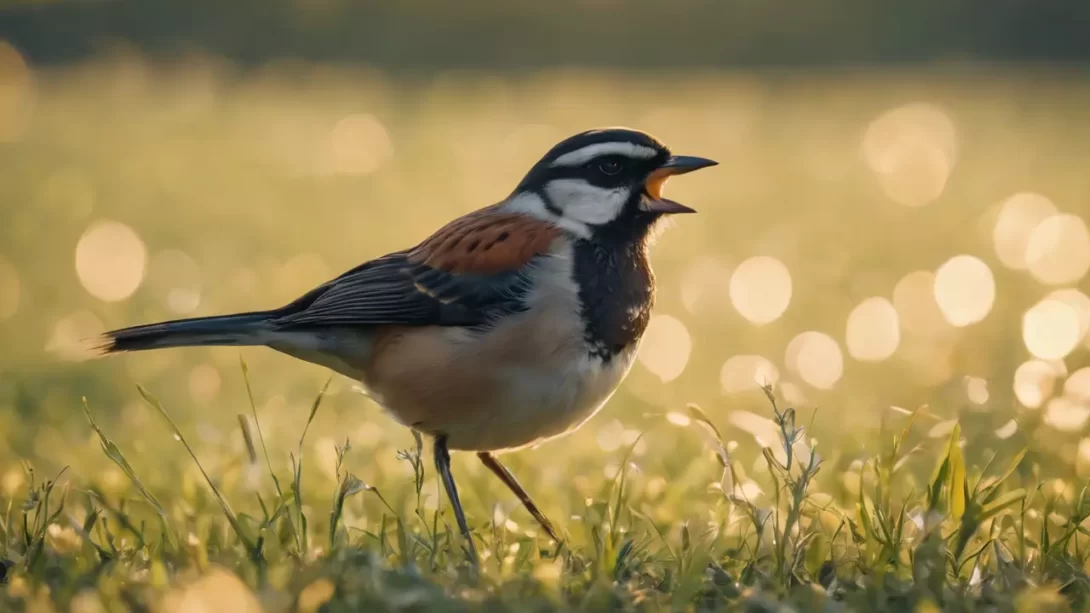Establishing a lush, green lawn from scratch can be a challenging task, especially when birds view your freshly sown grass seed as a free meal. Birds, while delightful to watch, can quickly decimate your efforts in establishing a new lawn or repairing patchy areas. Understanding how to protect your grass seed effectively is crucial to ensure successful germination and a healthy lawn.
Bird Behavior
Birds are naturally attracted to grass seeds as they provide a nutritious food source. Common culprits include sparrows, finches, and pigeons, although the variety of seed-eating birds can vary by region. Knowing the types of birds in your area and their feeding habits can help in devising a more effective strategy to protect your seeds. For instance, some birds are ground feeders while others may forage in groups, influencing the type of deterrents you might use.
Selection of Grass Seed
Choosing the right grass seed is a subtle yet effective step in deterring birds. Some seed mixtures are coated with a bird-repellent substance, making them less appealing. Another strategy is to opt for quick-germinating seeds. The faster the seeds sprout, the less time they are exposed and vulnerable to birds. Varieties like ryegrass often germinate quicker than others, offering a shorter window of opportunity for birds to feed on them.
Physical Barriers
Physical barriers are one of the most effective ways to protect grass seed from birds. Lightweight netting or burlap can be placed over the seeded area to prevent birds from accessing the seeds while still allowing light, air, and water to reach the soil. It’s important to secure these coverings properly and elevate them slightly above the ground to prevent birds from reaching the seeds through the material. For smaller or more vulnerable areas, homemade cages or covers made from chicken wire can provide excellent protection.
Distraction Techniques
Distracting birds from your seeded area can be a simple yet effective approach. Setting up bird feeders away from the seeded area can draw birds’ attention, providing them with an easier food source. Choose seeds or feed that are particularly attractive to the birds in your area. Additionally, implementing visual deterrents can also be helpful. Items like reflective tapes, aluminum pie plates, or even scarecrows can create an environment that’s less inviting to birds. These should be moved around occasionally to prevent birds from getting accustomed to them.
Chemical Repellents
Chemical repellents can offer a non-toxic solution to keep birds away from grass seeds. These products typically use a taste or smell that is unpleasant to birds but is harmless to them and other wildlife. It’s important to choose repellents that are environmentally friendly and safe for use in home gardens. Always follow the manufacturer’s instructions for application. Some repellents need to be reapplied after rain or watering, so it’s crucial to maintain the treatment for it to be effective.
Lawn Preparation and Seeding Techniques
The way you prepare your lawn and sow your seeds can also impact their vulnerability to birds. Start by preparing the soil properly, ensuring it’s loose and leveled. When sowing, cover the seeds lightly with soil or use a seed roller to press them into the ground. This reduces visibility and accessibility of the seeds to birds. For larger lawns, consider sectioning off areas and seeding them in stages. This way, you can protect each section more effectively and reduce the overall exposure of seeds.
Post-Seeding Care
Proper care after seeding is crucial in speeding up germination, thus reducing the time seeds are exposed to birds. Water the seeded area regularly to keep the soil moist, as dry conditions can delay germination. However, avoid overwatering, which can wash away seeds or bring them to the surface, making them an easy target for birds. Monitoring your lawn daily allows you to adjust your protection strategies as needed and to check for signs of germination. Once the grass begins to grow, it becomes less appealing to birds, gradually reducing the need for protective measures.
Alternative Seeding Methods
Using alternative seeding methods can also reduce the risk of birds eating your grass seed. One such method is hydroseeding, where a mixture of seed, mulch, fertilizer, and water is sprayed onto the soil. This creates a protective coating that hides the seeds from birds. Another option is to use seed mats or blankets. These products hold the seeds in place and provide a physical barrier against birds, while still allowing light, water, and nutrients to reach the seeds.
Timing and Persistence
The timing of your seeding can play a role in its vulnerability to birds. Seeding during times of the year when natural food sources for birds are abundant can result in less interest in your grass seed. Additionally, staying persistent with your protective measures is key. Birds are adaptable and may take some time to be deterred. Consistent application of deterrents, whether physical, chemical, or through distraction, is essential for their success.
Conclusion
Protecting your grass seed from birds requires a combination of tactics, from choosing the right seed to employing various protective and deterrent strategies. By understanding bird behavior, using physical barriers or repellents, and taking care in your seeding and lawn care practices, you can significantly reduce the likelihood of birds feasting on your seeds. Remember, patience and persistence are crucial; with the right approach, your grass seeds have a much better chance of growing into a beautiful, lush lawn.



